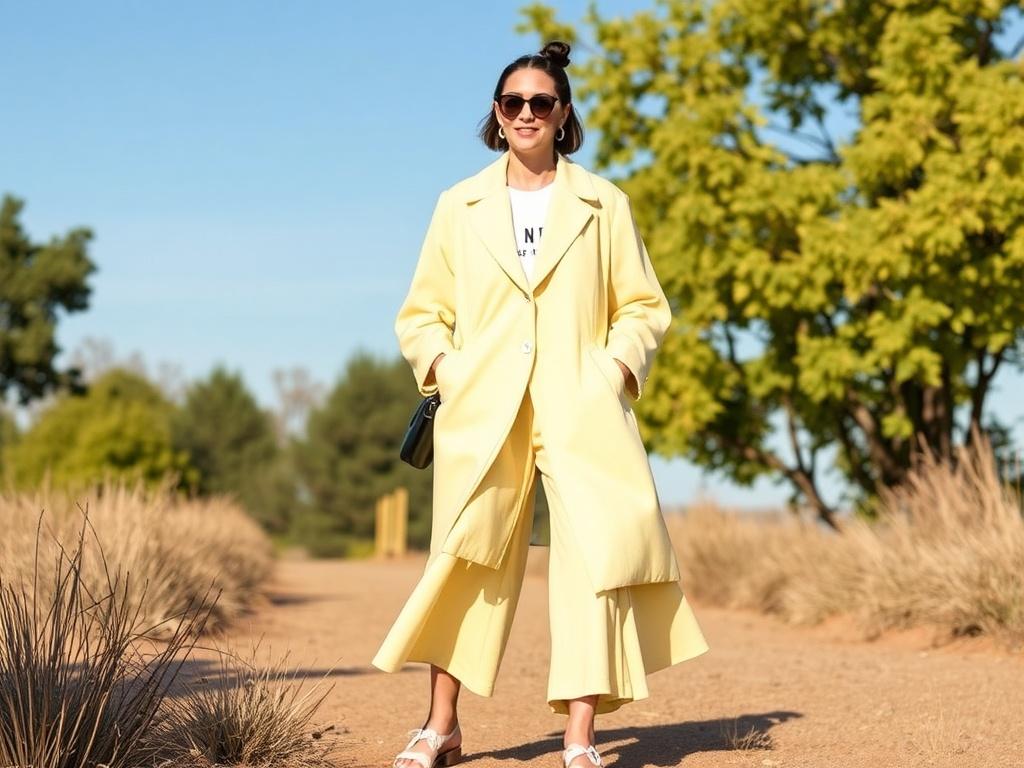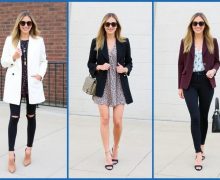SQLITE NOT INSTALLED
There’s a particular thrill in spotting a new look before it becomes familiar — noticing a silhouette, a color, or a way of combining things and feeling a small, private certainty that others will follow. Predicting style is not crystal-gazing. It’s pattern recognition, informed curiosity, disciplined observation, and some controlled experimentation. This article gives you a method and a mindset for doing exactly that, whether you’re a designer, buyer, creative director, entrepreneur, or simply someone who wants to understand why the clothes, interiors, and visuals around you change the way they do.
We’ll move from definitions and history to a practical forecasting framework. You’ll get case studies, a map of where to look for early signals, tools and metrics to track, hands-on experiments to run, ethical guardrails, and a grounded forecast for the next few years. Expect concrete lists, clear steps, tables that summarize key indicators, and a diary-like calendar for running your own forecasts. Read it slowly, refer back to it, and try the exercises. Predicting style becomes a craft the more you practice.
What I Mean by a “Style Movement”
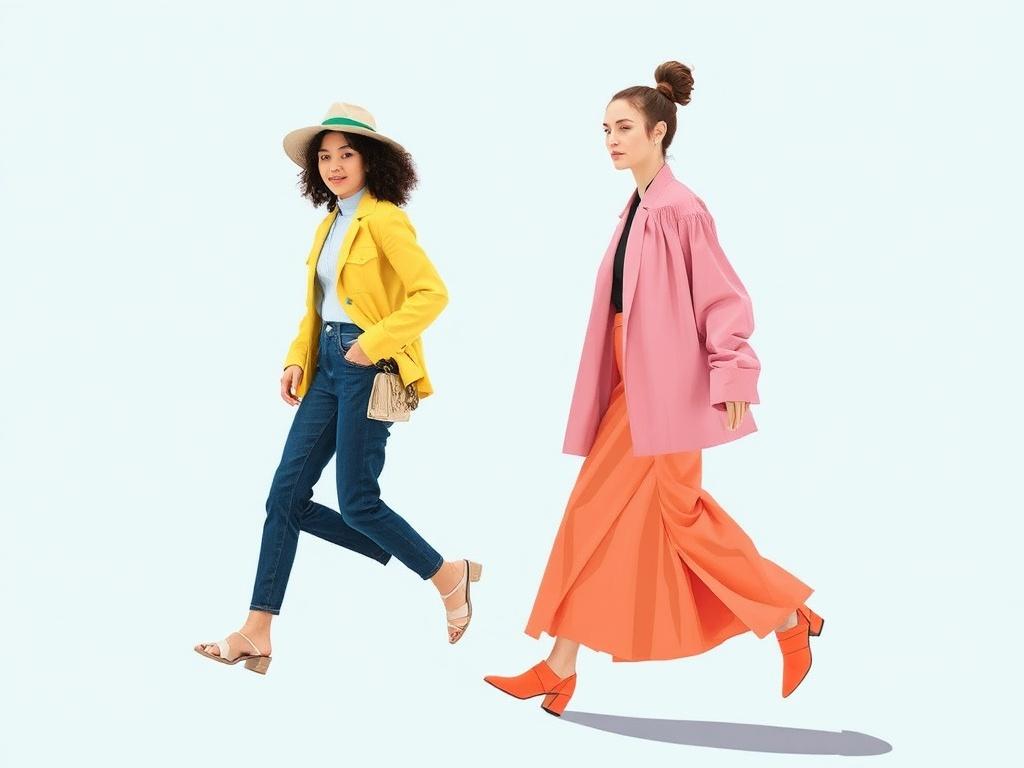
Style movements are collective shifts in aesthetic preference that affect what people make and buy over an extended period. They can occur in fashion, interiors, graphic design, product design, and architecture. A movement gathers momentum when multiple domains echo similar visual decisions — silhouettes, colors, textures, patterns, materials, production methods, and narratives — and those decisions spread through media, retail, and everyday life.
Movements are different from microtrends. A microtrend sparks fast and fades faster: a viral hemline, a meme-driven accessory, or a streetwear stunt. A movement has staying power because it answers broader cultural or material needs. Minimalism, athleisure, brutalism in architecture, cottagecore, and the Y2K revival are examples that show how ideas travel from a small group to mainstream consumption, each in its own way and for its own reasons.
Predicting a style movement means identifying the earliest reliable signals, understanding the socioeconomic and technological forces that will amplify those signals, and testing whether the signal can survive real-world constraints like manufacturing, pricing, and cultural friction. This article gives you a system for doing that without mistaking noise for signal.
Why Prediction Is Possible — and What Makes It Hard
Style is not entirely random. People respond to shared pressures: economic shifts, political climates, technological innovations, generational preferences, environmental imperatives, and the cultural objects they consume — music, TV, movies, and social media. These forces produce patterns. The difficulty lies in isolating the patterns that have enough momentum and real-world feasibility to evolve into a movement, rather than a flash.
Four conditions make a style movement possible: a new expressive need, a feasible material or production route, cultural amplification through gatekeepers or platforms, and economic viability for makers and buyers. If any of those factors is missing, a promising idea often fizzles. For example, a bold material innovation without emotional resonance will be a technical curiosity, not a movement. Conversely, a potent cultural mood without supply-side feasibility can be aspirational but never fully adoptable.
Prediction is also hampered by three common traps. First, selection bias: paying attention only to the circles you inhabit. Second, overreliance on algorithms: confusing platform growth metrics with deep cultural adoption. Third, confirmation bias: doubling down on ideas you want to be true. This guide acknowledges those traps and offers practical ways to mitigate them.
The Forecasting Framework You’ll Use
To forecast reliably, use a five-stage framework: Signal, Amplifier, Adoption, Consolidation, Diffusion. Treat the framework like a flowchart but expect overlaps and feedback loops.
Signal: Early evidence that a new aesthetic or material is being explored. Signals are small — a handful of street looks, a couple of indie designers using a new fabric, or a niche online community sharing motifs.
Amplifier: Gatekeepers or platforms that can scale the signal. Amplifiers include influential publications, celebrities, stylists, retail buyers, or algorithmic platforms that give certain content outsized visibility.
Adoption: The stage where early adopters and trendsetters incorporate the signal into purchasable objects. This is when designs become viable as products or editorial concepts.
Consolidation: Designers, manufacturers, and retailers create variations and standardize patterns. Production methods adapt, price points appear, and distribution channels commit.
Diffusion: The movement becomes recognizable to a wider public and shows up in mass retailers, corporate marketing, and mainstream media. At this point it’s no longer purely subcultural — it has become a part of the visual vocabulary.
Historical Case Studies: How Past Movements Took Shape
Studying history sharpens your intuition. Below I pick four movements from recent decades, mapping the signals, the amplifiers, and the moment of mainstream adoption. These are not exhaustive retellings; they are annotated case studies designed to teach pattern recognition.
Case Study 1: Minimalism and “Quiet Luxury”
Signal: A late-20th-century reaction to conspicuous consumption that emphasized pared-back forms, neutral palettes, and high-quality materials. The signal showed up first in art and architecture before infiltrating clothing and interiors.
Amplifiers: Design publications, elite interior designers, and the tastes of influential architects such as John Pawson and Tadao Ando. Minimalist photography and editorial direction in magazines helped normalize the look.
Adoption: High-end fashion houses and luxury brands picked minimalism up in the 1990s and 2000s, with garments that emphasized cut and fabric over ornamentation. The movement matured into “quiet luxury,” a term used to describe low-logo, high-quality goods that signal status through subtlety.
Consolidation and Diffusion: Premium retail and department stores adopted minimalism in curated assortments. Later, diffusion brands created accessible versions, making the aesthetic recognizably mainstream.
Case Study 2: Streetwear and Sneaker Culture
Signal: Sneakers and casual sportswear moving from athletic gear to fashion statements, combined with DIY customization and grassroots brand-building in the late 1990s and early 2000s.
Amplifiers: Influential artists, musicians (hip-hop culture), niche boutiques (Supreme, Stüssy), and collaborations with luxury designers. Social media and resale markets energized the culture later on.
Adoption: Major fashion houses and global brands began collaborating with streetwear labels and releasing limited drops. The scarcity model and storytelling around product drops created a new economic and cultural logic.
Consolidation and Diffusion: High demand pushed streetwear into mainstream retail and corporate fashion calendars. Sneakers evolved into collectors’ objects, with a robust secondary market supporting cultural status.
Case Study 3: Cottagecore
Signal: An aesthetic built around pastoral living, craft, and nostalgia that gained traction in small online communities sharing photographs, recipes, and DIY projects.
Amplifiers: TikTok, Instagram, and Pinterest, where aspirational short-form content helped the aesthetic spread rapidly. Influencers & creators built small economies around sewing patterns, recipes, and second-hand hauls.
Adoption: Retailers and independent designers began offering prairie dresses, floral prints, and hand-stitched apparel, translating digital mood into purchasable items.
Consolidation and Diffusion: Brands incorporated cottagecore motifs into broader assortments. The aesthetic’s rapid diffusion showed how social platforms can accelerate adoption across demographics.
Case Study 4: Y2K Revival
Signal: A resurgence of late-1990s and early-2000s references — glossy synthetics, baby tees, low-rise cuts — first visible among Gen Z communities mining early internet aesthetics.
Amplifiers: TikTok and Instagram creators who repurposed old media and resold vintage pieces. Celebrity stylists and nostalgic marketing campaigns helped the look reach wider audiences.
Adoption: Fast-fashion retailers and heritage brands produced Y2K-inspired lines, responding to the appetite for nostalgia and immediacy.
Consolidation and Diffusion: The movement’s speed came from a generational readiness to remix the past, and the logistics of producing inexpensive Y2K-style garments made broad diffusion rapid.
Where to Look for Early Signals
If you want to predict a style movement, you need a scouting system. Not every new idea will become a movement, but cultivating a broad and disciplined scanning practice will raise the probability that you’ll notice the right ones early.
Below are places and methods that consistently yield early signals. Use multiple sources to avoid echo chambers.
- Runway shows and off-calendar presentations — watch for recurring motifs across disparate designers.
- Street style archives — cities with active fashion scenes reveal experimental silhouettes before the runways copy them.
- Niche communities and subcultures — forums, Discord servers, and online collectives often incubate styles.
- Independent designers and small labels — their risk tolerance is higher, so they try novel materials and cuts first.
- Secondhand and vintage markets — resale platforms reveal what categories are becoming scarce or prized.
- Music, film and TV wardrobes — visual media often seeds mass adoption through characters and soundtracks.
- Material science and textile innovation reports — new fabrics can enable previously impossible silhouettes.
- Design schools and graduate shows — young designers experiment with cross-disciplinary ideas.
- Micro-influencers and content creators — they often act as cultural tastemakers with niche audiences.
- Local craft movements — regional materials and techniques can scale globally when they hit the right audience.
How to Structure Your Scouting
Design a simple rotating schedule that tracks different sources on different days. For example, monitor runway coverage weekly, browse niche forums twice a week, check secondhand marketplaces daily for emergent colors and silhouettes, and deep-dive design-school shows quarterly. Keep notes and tag items with a consistent taxonomy (silhouette, material, motif, platform) so signals are comparable over time.
Signals Table: What to Watch and Why
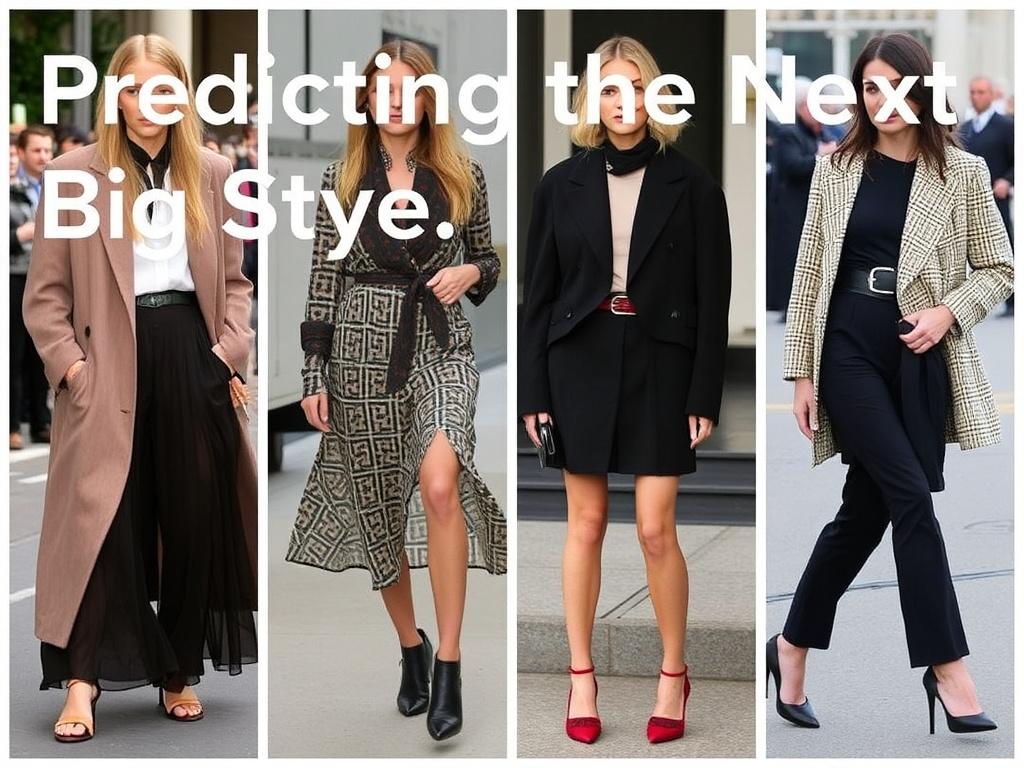
| Signal | Where to Observe | What It Indicates | Typical Lead Time |
|---|---|---|---|
| Repeated motif across indie designers | Lookbooks, Instagram, niche boutiques | Emerging aesthetic with design feasibility | 9–24 months |
| Surge in resale prices for a category | Depop, Etsy, eBay, StockX | Demand signal and scarcity-driven cachet | 3–12 months |
| Material innovation announcements | Trade journals, research labs, patent filings | New possibilities for construction or sustainability | 12–48 months |
| Hashtag velocity on short-form video platforms | TikTok, Instagram Reels | Rapid cultural amplification (high noise risk) | 1–9 months |
| Editorial coverage across stratas | High-end magazines to online blogs | Gatekeeper endorsement and narrative shaping | 6–18 months |
| Collaborations between sectors | Brand press releases, product launch calendars | Cross-market validation and distribution potential | 6–24 months |
Tools and Techniques: Qualitative and Quantitative
Forecasting requires both ears and eyes — qualitative sensitivity to mood and quantitative measurement to test claims. Below I outline practical tools and the techniques to use them.
Qualitative Tools
Field research: Attend shows, markets, studio visits, and small fashion events. Take photos (when allowed) and record short notes about how people move and wear garments. The human context often reveals how usable a look really is.
Interviews: Talk to makers, fabric mills, tailors, and boutique owners. They see production realities that editors don’t: what can be made at scale, cost constraints, and which raw materials are becoming scarce.
Content ethnography: Follow micro-communities. Create a list of 10–20 accounts or forums to monitor consistently — spending an hour a week scrolling these sources will reveal patterns faster than occasional checks.
Quantitative Tools
Search and social analytics: Google Trends, Pinterest Trends, TikTok Creative Center, and platform APIs (where accessible) provide data on interest growth. Track month-over-month changes for specific keywords and compare them to baseline categories.
Resale and marketplace data: Platforms like Depop, StockX, Poshmark, and Etsy provide indicators of demand and scarcity. Look at sell-through rates, price growth, and search queries within these platforms.
Retail assortments and SKU counts: Track how many brands and price points are offering similar items. A rising SKU count in a category signals that production is catching up to interest.
Sentiment analysis: Use basic sentiment scraping to see whether mentions are neutral, positive, or negative. This can help differentiate between momentary hype and genuine desire.
Putting Tools Together: A Sample Weekly Workflow
- Monday: Run Google Trends and Pinterest search comparisons for 3–5 candidate keywords.
- Tuesday: Scan TikTok and Instagram hashtag velocity and capture 10 representative posts.
- Wednesday: Check resale platforms for price trends and sell-through velocity.
- Thursday: Read trade journals and mill newsletters for material and production updates.
- Friday: Review editorial coverage and boutique inventories for consolidation signals.
- Monthly: Synthesize findings and score signals on a 1–5 scale for momentum and feasibility.
Quantitative Indicators Worth Tracking
To move beyond feeling and toward evidence, track a handful of key metrics. Focus on ones you can measure consistently and that are likely to be available to you without enterprise subscriptions.
- Hashtag Velocity: change in number of posts using a hashtag per week.
- Search Growth: percent increase in related Google searches year-over-year.
- SKU Proliferation: number of brands offering a related product in a 6-month window.
- Resale Price Index: average sale price on two resale platforms compared over rolling 3-month periods.
- Runway Frequency: number of designers showing a motif or ratio of shows containing the motif.
- Media Penetration Score: number of editorial features across high, medium, and low-tier publications.
Example: Calculating Hashtag Velocity
Imagine tracking #moderncraft. If Week 1 shows 800 posts, Week 2 shows 1,200 posts, and Week 3 shows 2,400 posts, velocity is increasing multiplicatively. Basic formula: velocity = (posts_week_n – posts_week_(n-1)) / posts_week_(n-1). Use three-week rolling averages to smooth noise and flag sustained acceleration.
| Week | Posts | Week-over-Week Change | Velocity |
|---|---|---|---|
| 1 | 800 | N/A | N/A |
| 2 | 1,200 | 400 | 0.50 |
| 3 | 2,400 | 1,200 | 1.00 |
Tracking this metric alongside search volume and resale prices gives a triage: social acceleration with rising search interest and increasing resale prices is a stronger signal than social acceleration alone.
The Role of Culture, Economics, and Politics
No movement exists in a vacuum. Broader cultural moods and economic realities shape which aesthetics resonate. Consider three types of macro forces:
- Economic cycles: Recessions and booms influence buying behavior. Recessions often favor durability and timelessness, while booms may encourage experimental, conspicuous items.
- Political climates: Periods of political unrest can encourage defensive or expressive dressing. Uniform-like or practical aesthetics may gain traction in uncertain times; subversive or nostalgic looks can surface as escapism.
- Generational values: New cohorts revalue the past and remix it, while also demanding different values — sustainability, transparency, and inclusivity are becoming non-negotiables for many young consumers.
Example: The 2008 financial crisis helped catalyze a focus on quality and multifunctional clothing. The 2020 pandemic made comfort and home-focused design central, accelerating athleisure and the small-collection, digitally native brand model. These are testable links between macro forces and aesthetic outcomes — not deterministic laws, but powerful context.
Technology’s Influence on Style
Technology changes what’s possible. New materials, production methods, digital experiences, and distribution channels all reshape style. Three technological categories deserve particular attention.
Material and manufacturing tech: Innovations like recycled fibers, cellulose-based leathers, and 3D knitting change the cost, feel, and sustainability profile of clothing. On the manufacturing side, nearshoring and on-demand production alter how quickly styles can move from prototype to commerce.
Digital-native fashion: Virtual clothing, NFTs, and digital collaborators mean style can exist independently of physical constraints. Digital-only garments influence physical design and vice versa; some designers create parallel physical and digital collections.
AI and design tools: Generative design and AI-assisted prototyping accelerate iteration. These tools lower the barrier to experimenting with patterns and silhouettes, increasing volume of ideas that need curation — which makes human taste curation more valuable.
Predicting Across Categories: How Trends Cross-Pollinate
Style movements rarely stay confined to one discipline. A graphic design trend — say, brutalist typography — can bleed into retail aesthetics and architecture. Similarly, a silhouette in fashion can influence furniture shapes and product ergonomics. Track cross-category signals to catch movements earlier and spot richer narratives.
Time lags matter. Fashion cycles are often quicker than architecture cycles. A motif pioneered in clothing might appear in interiors months or years later, filtered through practical constraints and scale. A successful forecast acknowledges these lags and anticipates how motifs will translate between materials and uses.
How Designers and Brands Should Respond
Once you see a credible signal, how do you act? The answer depends on scale and appetite for risk. Below are practical strategies for small brands and large organizations.
Actionable Checklist for Small Brands and Independent Designers
- Prototype quickly: Make small runs (10–50 pieces) to test appetite.
- Create storytelling assets: Capture the idea with strong photography and short-form video to seed social platforms.
- Use pre-orders and limited drops: They reduce inventory risk and provide real demand signals.
- Engage micro-influencers: Targeted seeding often yields better ROI than broad campaigns.
- Partner with local manufacturers: Short supply chains let you iterate faster.
Actionable Checklist for Larger Brands and Retailers
- Run controlled experiments: Launch capsule collections in select stores or geographies.
- Hedge production: Combine limited initial runs with scalable options if demand proves real.
- Invest in materials scouting: Secure access to new fabrics early to avoid supply bottlenecks.
- Develop modular collections: Create designs that can be adapted across assortments and price points.
- Monitor resale channels: Secondary market demand can validate new categories before full-scale production.
How to Test a Hypothesis: Four Experiments You Can Run
Testing is the linchpin of rigorous forecasting. Treat your prediction as a hypothesis and design simple experiments that yield clear yes/no signals. Below are four experiments with criteria for success.
| Experiment | Execution | Minimum Success Criteria | What it Proves |
|---|---|---|---|
| Pre-order capsule | Release 5–7 pieces via pre-order with 30% deposit | Sell-through 40% of target within 2 weeks | Market wants the product; price point may be viable |
| Micro pop-up | Host a three-day shop in a targeted neighborhood | Daily foot traffic and conversion > base store median | Physical desirability and contextual fit |
| Influencer seeding | Send product to 10 micro-influencers and track UTM sales | At least 3 influencers drive measurable feature-level sales | Social amplification and narrative resonance |
| Online A/B landing pages | Create two landing pages for different narratives or images | CTR or conversion difference > 20% | Which story or visual motivates purchase |
Experiment data will tell you more than intuition. Combine results across experiments and weight them by reach: a micro-pop-up’s local feedback should be scored differently than national pre-orders.
Ethical Considerations: Rights, Labor, and Cultural Context
Predicting style is not morally neutral. Designers and brands must consider cultural appropriation, labor standards, and environmental impacts when they adopt and scale aesthetics.
Start with this checklist before you scale an idea:
- Source transparency: Know where materials come from and who makes them.
- Cultural attribution: If a motif is derived from a living tradition, seek collaboration and credit, and compensate appropriately.
- Environmental cost accounting: Estimate the carbon and water footprint of scale-up and consider offsets and circular strategies.
- Labor due diligence: Ensure suppliers adhere to labor standards and have auditable practices.
Ethical forecasting isn’t just about good intentions — it’s a practical risk-management strategy. Cultural backlash and supply-chain disruptions can doom a movement’s commercial potential if mishandled.
Common Pitfalls and How to Avoid Them
Forecasting is full of traps. Awareness will save you time and inventory.
- False positives: A platform-driven fad looks large because of algorithms but lacks offline viability. Test with real purchases, not just likes.
- Overfitting: Don’t generalize from a single community or city. Validate across at least three distinct contexts.
- Copycat saturation: When too many players rush, the category can collapse into sameness. Prefer unique value or differentiated narratives.
- Ignoring production realities: Some looks require complex fabrication; estimate cost and lead times before committing.
To reduce false positives, insist on at least two independent signal types (social acceleration + resale interest, or material innovation + editorial coverage) before elevating a trend to “serious.”
Forecasting Calendar: A Practical Cadence
Forecasting is a rhythm, not a single moment. Establish a cadence that lets you respond without being reactive. Below is a sample annual calendar you can adapt.
| Cadence | Activity | Output |
|---|---|---|
| Daily | Scan social platforms, resale sites, and marketplaces | Signal notes and exemplar captures |
| Weekly | Synthesize Google Trends and hashtag velocity; update KPI dashboard | Weekly scorecard of candidates |
| Monthly | Deep-dive on one or two candidates; run small experiments | Experiment results and insights |
| Quarterly | Review aggregated data, interview suppliers, and reassign resources | Quarterly trend report and action plan |
| Annually | Publish a forecast and adjust strategic direction | Annual report and budget alignment |
A Practical Forecast for the Next 3–5 Years
Forecasting requires courage. Here is a measured, evidence-based set of expectations for the next 3–5 years, grounded in patterns we’ve already observed and the signals currently visible across platforms, production landscapes, and material innovation notes. These are not certainties, only prioritized possibilities.
1) Warm Minimalism: Minimalism evolves. The next wave keeps clean lines but reintroduces texture, handwork, and warmer tones — think tactile neutrals, visible seams as detail, and a softer approach to proportion. This is a reaction to the sterility some associate with earlier minimalism and reflects a desire for comfort and authenticity.
2) Modular and Transformable Clothing: As on-demand and small-batch manufacturing improve, expect clothing designed to be reconfigured — detachable elements, convertible silhouettes, and garments that serve multiple roles. The practical driver is both sustainability and consumer demand for versatility.
3) Local Craft Revival with Global Hybrids: Regional craft techniques will be remixed with contemporary design, creating hybrid objects that blend heritage motifs with modern forms. This will be driven by ethical narratives and a search for distinctiveness in a saturated market.
4) Adaptive and Smart Textiles at Scale: Materials that regulate temperature, resist stains, or integrate simple sensors will penetrate everyday garments, initially in premium segments before scaling down as costs fall. The driver is both consumer utility and growing investment in wearables.
5) Digital-Physical Blurring: Digital-native fashion and AR experiences will continue to influence physical products. Expect more brands to offer limited digital pieces alongside physical wearables and to use AR try-ons as standard retail tools.
6) Shorter Nostalgia Cycles and Remix Culture: Cultural recycling will accelerate, compressing the latency of inspiration. Designers will shuttled elements from past decades faster, creating mash-ups and micro-eras that pop up and fade quickly.
7) Gender Fluidity Moves Toward Practical Neutrality: The trend toward gender-neutral design will deepen, emphasizing fit and function over gendered codes, while pockets of explicit gendered expression remain culturally important.
8) Sustainability as Design Language (Not Just Messaging): Materials and circularity will stop being a separate sustainability conversation and start to define aesthetics — visible repairs, patchwork, and upcycled motifs will be intentionally designed, not just functional afterthoughts.
What These Predictions Look Like in Practice
Garments: Expect layered, convertible coats with modular linings; trousers with adjustable rises; dresses that button into shorter or longer versions; and garments constructed from blended reclaimed textiles that celebrate surface irregularities.
Interiors: Furniture will favor tactile surfaces, visible joinery, and modular systems that adapt to multiple rooms. Color palettes will favor sun-kissed neutrals, deep earthy accents, and occasional saturated retro tones for contrast.
Graphics and Packaging: Typography will combine humanist serifs with brutalist grids, and packaging will favor tactile, repairable designs with visible reuse instructions — a new kind of luxury that signals care over disposability.
Visual Cues and Moodboard Language
When you assemble a moodboard for a predicted movement, be precise about sensory and functional cues. Below are the typical building blocks and how they might appear for the movements outlined above.
Warm Minimalism
- Color palette: Warm sand, clay, soft ochre, muted olive, gentle black
- Textures: Matte ceramics, brushed metal, boiled wool, visible stitching
- Silhouettes: Clean, relaxed tailoring with rounded edges
- Motifs and details: Subtle pleating, exposed seam tape, tone-on-tone patching
Modular Clothing
- Color palette: Functional neutrals with accent connectors (zippers, toggles)
- Textures: Durable woven nylons, soft-lined panels, reinforced seams
- Silhouettes: Core base pieces with attachable layers
- Motifs and details: Visible modular attachment points, convertible hems
Local Craft Hybrids
- Color palette: Local dyes and natural pigments, unexpected contrasts
- Textures: Hand-stitched surfaces, block-printed cotton, raw-edged finishes
- Silhouettes: Simple shapes allowing surface detail to dominate
- Motifs and details: Regional patterns adapted into repeatable motifs
Tools, Publications, and Resources for Ongoing Learning
Good forecasting is a practice. Below are names and types of resources — not an exhaustive list, but a starting library you can return to and expand.
- Trend forecasting firms: WGSN, Trend Union (paywalled but informative for professional work).
- Design and fashion publications: The Business of Fashion, Dazed, i-D, Dezeen, Surface Magazine.
- Data tools: Google Trends, Pinterest Predicts, TikTok Creative Center, platform-specific analytics.
- Resale and marketplace platforms: Depop, Poshmark, StockX, Etsy, eBay.
- Material and textile news: Textile World, Material ConneXion, industry conferences.
- Academic and craft resources: University design departments and local craftsmanship networks for deep dives into technique and technique revival.
Putting It Into Practice: A Short Project Plan
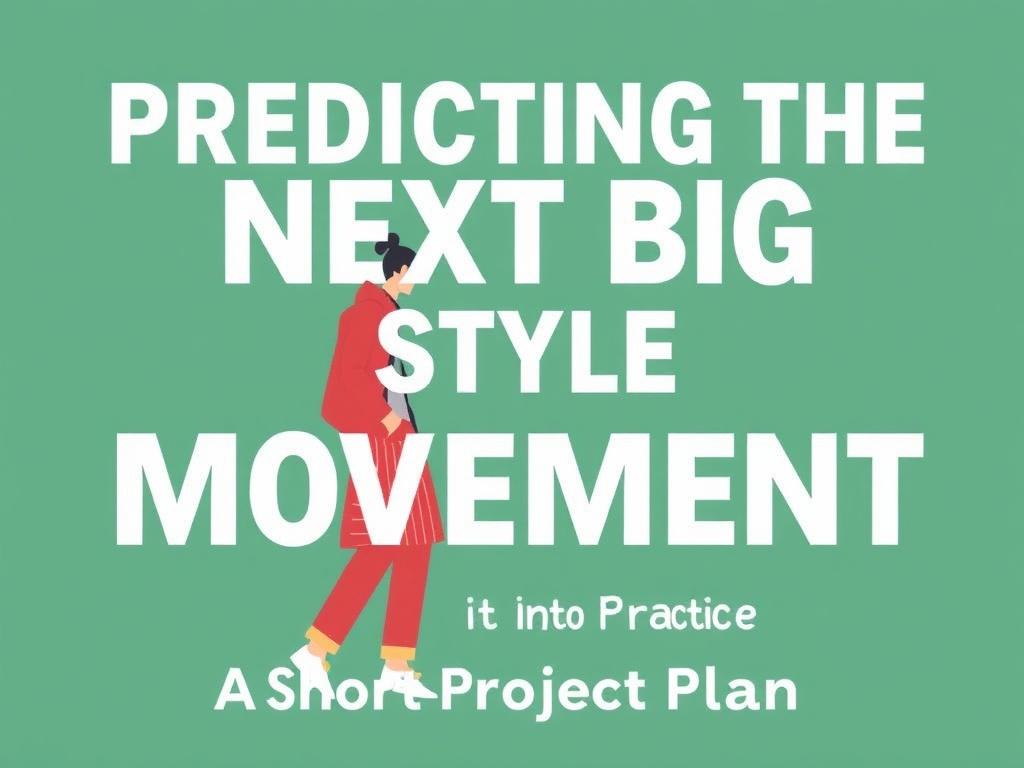
If you want to test your forecasting muscles, try a three-month project. Here’s a compact plan with weekly milestones to build that discipline into your calendar.
- Week 1: Choose three candidate signals and set up tracking in a shared spreadsheet.
- Week 2: Build moodboards and hypotheses for each signal (why this could become a movement).
- Week 3–4: Run social listening and hashtag velocity checks; set up Google Trends comparisons.
- Week 5–6: Design small experiments (pre-orders, A/B landing pages, influencer seeding).
- Week 7–9: Execute experiments and gather data; interview two suppliers or makers.
- Week 10–11: Synthesize results; adjust signal scores and feasibility assessments.
- Week 12: Present a short trend report: forecasted likelihood, recommended actions, and next steps.
Frequently Overlooked Sources of Insight
Three underused places to find durable signals are worth highlighting because they often reveal constraints or possibilities that public-facing platforms hide.
1) Mill and supplier newsletters: These tell you what’s available and what’s being scaled. When mills shift production capacity toward a material, it’s a supply-side confirmation.
2) Repair and alteration shops: Tailors see what people keep and repair, which is often a better indicator of lasting value than what’s newly bought.
3) Institutional procurement: Schools, hospitals, and public design projects adopt certain materials for performance and durability. These adoptions can presage broader use, especially in functional design.
Measuring Success: How You’ll Know Your Forecast Worked
Success is not simply being right at a moment; it’s enabling better decisions. Use the following practical metrics to evaluate your forecasting program:
- Decision impact: Number of product decisions or budget allocations informed by forecasts.
- Experiment ROI: Ratio of experiment investment to validated product revenue or learnings.
- Prediction accuracy: Track outcomes of top 5 predictions each year and score them on realized adoption.
- Lead time relevance: How often your forecasts provided actionable lead time (e.g., allowed design and production changes).
Final Notes: Cultivating the Right Mindset
Predicting style is part research, part listening, and part creative empathy. Cultivate patience and curiosity. Make small bets frequently, learn quickly, and build systems that turn soft observations into testable ideas. The work is iterative: the first time you forecast something correctly may be luck; the second time is likely skill.
Above all, remember that style movements are human stories as much as design phenomena. They succeed when they answer real needs — practical, emotional, or symbolic. Keep your ear to the ground, but keep your feet in reality: test, prototype, and respect the people and cultures that carry the motifs you admire.
Closing: Your Next Steps
Start small. Pick one source of signals (a resale platform, a foreign street-style feed, or a textile newsletter) and commit to a weekly review for three months. Record every find, score it, and run one micro-experiment to test a hypothesis. Keep a running log and compare your early sense against measured outcomes. Over time you’ll sharpen the filters that separate noise from nascent movements, and you’ll begin to predict with a confidence that arises from evidence, not instinct alone.
If you take anything away from this guide, let it be this: forecasting a style movement is a craft you can learn. It rewards consistent observation, quick testing, and ethical curiosity. The next big movement is already forming somewhere — now you know where to look and how to act when you see it.

